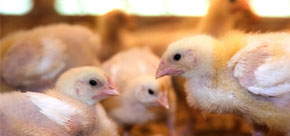Ducks Standards
ANIMAL HEALTH AND WELFARE Version 5.1 (modified)
Click to view
Key – Those standards which have greater significance (all other standards are normal)
Recommendation – Those which do not affect certification
New – A completely new standard which the member must now adhere to
Revised – A standard that has changed and requires the member to take some different or additional action to before
Upgraded – The standard has been upgraded to a Key standard or from a Recommendation to a full standard
Appendix – Referenced in ‘How you will be measured’. Indicates that additional information is provided in the Appendices, which are available at the end of each section.
KH.AH.2
Records of the health and performance of all birds must be maintained
How you will be measured
KH.AH.2.a
KH.AH.2.b
KH.AH.2.e
Health and performance records
KH.AH.4
The health and welfare of birds must be met at all times
How you will be measured
KH.AH.4.a
KH.AH.6 Key
Birds must be handled in a way that avoids injury and minimises stress
KH.AH.7 Key
All persons looking after the health and welfare of birds/ducklings must be demonstrably competent
How you will be measured
KH.AH.7.a
KH.AH.7.b
KH.AH.7.1
There must be a named Welfare Officer who is responsible for co-ordinating welfare on-farm/in the hatchery
How you will be measured
KH.AH.7.1.a
KH.AH.7.1.b
KH.AH.7.2 Key
All poultry farms/hatcheries must retain the services of a named veterinary surgeon or practice
KH.AH.8 Key
Sick or injured birds/ducklings must receive prompt attention in order that suffering is not prolonged
(UPGRADED)
How you will be measured
KH.AH.8.a
KH.AH.9 Key
Birds that do not respond to treatment or require emergency euthanasia must be promptly and humanely euthanased by a trained and competent person
How you will be measured
KH.AH.9.e
KH.AH.9.f
KH.AH.9.g
KH.AH.9.h
KH.AH.9.i
KH.AH.10.1
Where a flock has tested positive for Salmonella Enteritidis and/or Typhimurium environmental swabs, representative of the building/housing must be taken and building/housing not restocked until two negative results have been obtained
Environmental swab test results
KH.AH.10.2
Hatcheries must be monitored for Salmonella
How you will be measured
KH.AH.10.2.a
Salmonella testing records kept for two years
- Further information on animal health and welfare is given in the Code of Recommendations for the Welfare of Livestock – Ducks at: https://www.gov.uk/government/publications/poultry-on-farm-welfare
- Guidance on animal health and disease can be found at: www.nadis.org.uk
- The Humane Slaughter Association provide information on euthanasia on their website: www.hsa.org.uk
More Standards
- AH.4.1 – Access to water for bathing can assist ducks in meeting their biological requirements, such as wet preening. It is accepted that it is often impractical to provide open water for most birds because of risks to health, hygiene and food safety. It should be possible to observe ducks dipping their heads under the water, and being able to take water up by their bill and shaking water over their body without difficulty.
